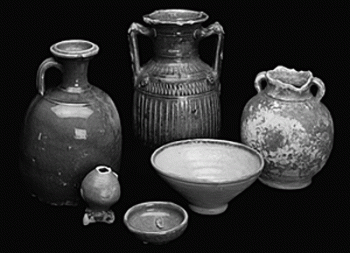American Journal of Archaeology | The Journal of the Archaeological Institute of America
You are here
Late Hellenistic and Early Roman Invention and Innovation: The Case of Lead-Glazed Pottery
October 2007 (111.4)
Late Hellenistic and Early Roman Invention and Innovation: The Case of Lead-Glazed Pottery
The western production of lead-glazed pottery began in Asia Minor during the first century B.C.E. Examining this topic offers insights into invention and innovation in a period frequently dismissed as technologically stagnant and invites questions about why lead-glazed pottery did not come into general use in Europe until the Medieval period. The identification of this pottery with the rhosica vasa mentioned by Cicero and Athenaeus highlights difficulties in reconciling documentary sources with material culture. Lead-glazed pottery is discussed in terms of chronology, function, and production technology. Contemporaneous developments in glass and metalwork suggest cognitive synchronization among workers in different materials. The trajectory of invention, innovation, and diffusion of lead-glazed pottery is compared with that of other Greek and Roman technologies.
Late Hellenistic and Early Roman Invention and Innovation: The Case of Lead-Glazed Pottery
By Kevin Greene
American Journal of Archaeology Vol. 111, No. 4 (October 2007), pp. 653–671
DOI: 10.3764/aja.111.4.653
© 2007 Archaeological Institute of America


